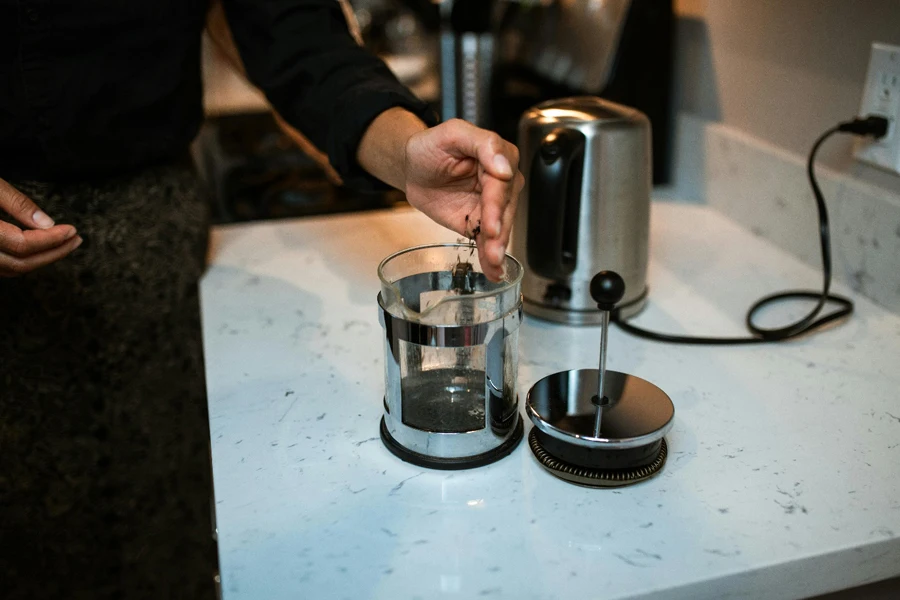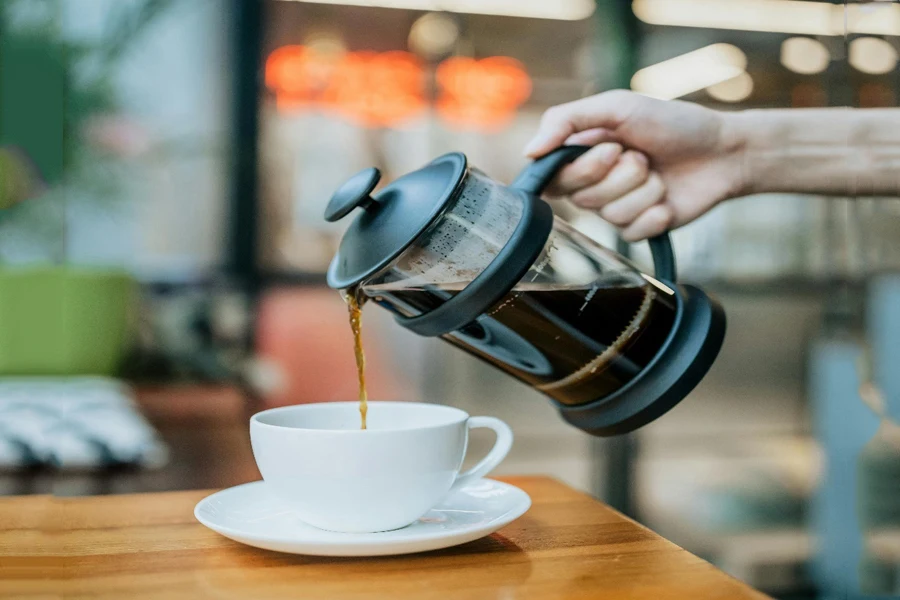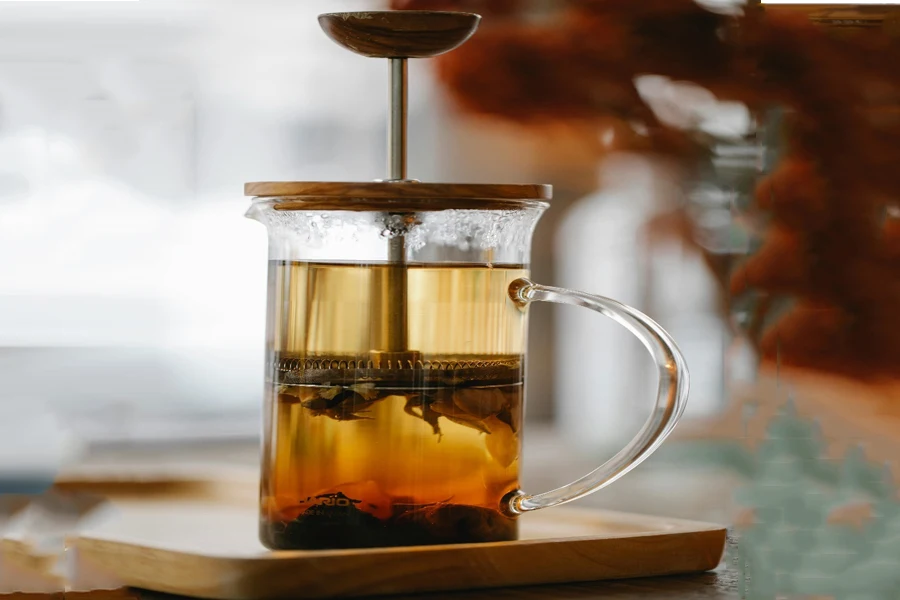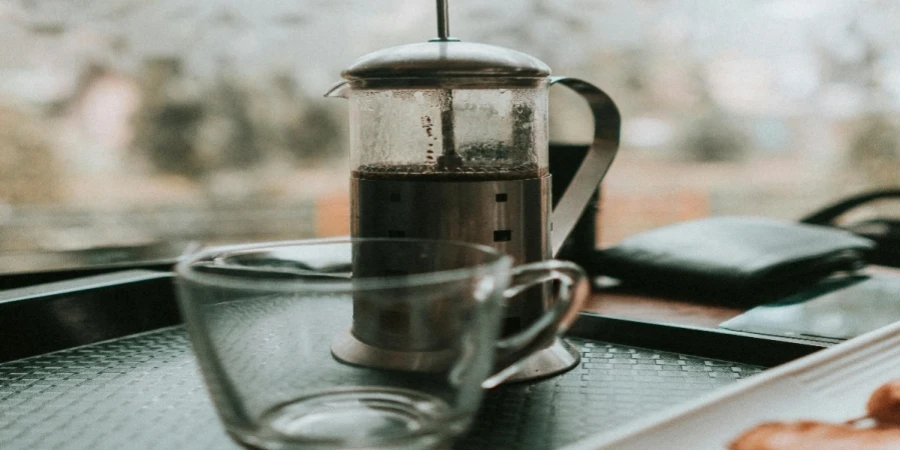Table of Contents
● Introduction
● Market overview
● Different types and their features
● Things to consider when selecting products
● Conclusion
Introduction

The French press is a quintessential tool in the coffee brewing arsenal, favored for its ability to produce rich, full-bodied coffee. Its straightforward, manual operation appeals to both coffee aficionados and professionals seeking control over the brewing process. In the commercial context, the French press stands out for its versatility and cost-effectiveness, making it a staple in cafes, restaurants, and hospitality settings. Understanding the market dynamics and the variety of French press options available can help businesses make informed decisions, ensuring they meet the growing demand for good quality, artisanal coffee experiences.
Market overview

Market scale and growth
The global market for French press coffee makers was valued at USD 1.2 billion in 2023 and is projected to grow to USD 1.8 billion by 2031, reflecting a CAGR of 4.6%. This growth is driven by the increasing popularity of specialty coffee and the rise in home brewing trends. Consumers are becoming more conscious of sustainability, leading to a higher demand for eco-friendly brewing methods, which French presses cater to by eliminating the need for disposable filters.
Regional insights
Market shares indicate a balanced demand between commercial and private users. In terms of geographical dominance, North America, Europe, and Asia-Pacific are the leading regions, with North America holding a significant share due to its strong coffee culture and high consumer spending power. Europe follows closely, driven by a rich tradition of coffee consumption and a growing preference for artisanal coffee. The Asia-Pacific region is experiencing rapid growth due to rising disposable incomes and increasing awareness of premium coffee products.
Changing trends
Significant market changes include the shift towards home brewing as consumers seek to replicate café-quality coffee in their own homes. Additionally, the heightened awareness of environmental issues has spurred interest in sustainable coffee brewing options, making French presses a preferred choice for many. This trend is expected to continue, driving further growth in the market.
Different types and their features

Glass French presses
Glass French presses are popular due to their affordability and transparency, which allows users to monitor the brewing process. Typically made from borosilicate glass, which is more resistant to thermal shock, these presses can handle boiling water without cracking. However, the material’s fragility remains a concern, requiring careful handling to avoid breakage. Most glass models come with a metal or plastic frame to provide additional support and protection.
Stainless steel French presses
Stainless steel French presses are renowned for their durability and excellent heat retention. These presses often feature a double-wall construction, creating a vacuum seal that keeps coffee hot for hours. Stainless steel models are also rust-resistant and can withstand drops and impacts better than glass or ceramic. They often include fine mesh filters that effectively separate coffee grounds, resulting in a cleaner brew. Many stainless steel presses are dishwasher-safe, simplifying the cleaning process.
Ceramic/stoneware French presses
Ceramic or stoneware French presses offer a unique combination of aesthetic appeal and functional benefits. These presses are typically made from high-fired ceramic, providing good heat retention and resistance to thermal shock. The material’s insulating properties help maintain the coffee’s temperature for a longer duration. Additionally, ceramic presses come in various colors and designs, adding a touch of elegance to the kitchen. However, they are heavier than glass and can chip or crack if not handled carefully.
Single-walled designs
Single-walled French presses are designed for users who prefer immediate consumption of their coffee. These models are lighter and less expensive, making them accessible to a wider audience. The lack of additional insulation means that coffee cools down faster, which might not be ideal for those who like to savor their drink over time. Single-walled presses are often easier to clean and maintain, with straightforward designs that facilitate quick assembly and disassembly.
Double-walled designs
Double-walled French presses are engineered to provide superior insulation, making them ideal for keeping coffee hot for extended periods. The double-wall construction creates an insulating layer of air between the walls, significantly reducing heat loss. This design is particularly beneficial for environments where maintaining coffee temperature is crucial, such as offices or large gatherings. Despite being heavier and more expensive, double-walled presses offer a durable and efficient solution for serious coffee enthusiasts.
Things to consider when selecting products

Capacity
When selecting a French press, it is essential to match the capacity of one’s coffee consumption needs. French presses are typically available in sizes ranging from 3 cups (350 ml) to 12 cups (1.5 liters). Smaller models, like the 3-cup (350 ml) press, are ideal for single servings or small households, while larger models, such as the 8-cup (1 liter) or 12-cup (1.5 liters), are better suited for families or office settings. It’s important to note that the “cup” measurements for French presses are often smaller than standard US cup sizes, usually around 4 ounces per cup.
Filtration quality
The quality of the filtration system is a crucial factor in ensuring a sediment-free cup of coffee. Look for French presses with multi-layered stainless steel mesh filters, which can effectively trap fine coffee grounds while allowing the rich oils and flavors to pass through. Some high-end models use double-filter systems for an even cleaner brew. The tightness of the seal between the filter and the carafe is also important; a loose fit can result in grounds slipping into the coffee. Additionally, consider the ease of disassembling the filter for thorough cleaning, as residue buildup can affect performance over time.
Material and build quality
The material of the French press not only impacts its durability but also its thermal performance and aesthetic appeal. Glass French presses, often made from borosilicate glass, are resistant to thermal shock but can be fragile. Stainless steel models, particularly those with double-walled construction, offer superior durability and heat retention, maintaining coffee temperature for longer periods. Ceramic or stoneware presses provide good insulation and come in various colors and designs, though they can be heavier and more prone to chipping. Look for presses with sturdy handles and well-constructed plungers to ensure ease of use and longevity.
Insulation needs
Deciding between single-walled and double-walled designs depends on one’s insulation needs. Single-walled French presses are lighter and cool down faster, making them suitable for immediate consumption. Double-walled models, with their vacuum-sealed insulation, can keep coffee hot for up to an hour or more, ideal for those who prefer to enjoy their coffee slowly. For instance, a double-walled stainless steel French press can maintain coffee temperature within 5-10 degrees of the original brewing temperature for up to 30 minutes, and only lose about 20 degrees after an hour.
Ease of cleaning
Ease of cleaning is an essential consideration, especially for those who use their French press daily. Dishwasher-safe components can significantly reduce the cleaning effort, but manual cleaning is often recommended to preserve the integrity of the components. Look for French presses with removable plunger assemblies and easily disassembled filters, which allow for thorough cleaning of all parts. Pay attention to the design of the carafe’s interior as well; smooth surfaces without ridges or seams are easier to clean and less likely to harbor coffee oils and residues. Some models come with additional tools, such as cleaning brushes, to aid in maintenance.
Conclusion

Choosing the suitable French press requires a careful balance of personal preferences and practical considerations, such as capacity, filtration quality, material, insulation needs, and ease of cleaning. By focusing on these key factors, businesses can ensure they provide the ideal coffee experience to their customers, aligning with both functional needs and aesthetic desires.




